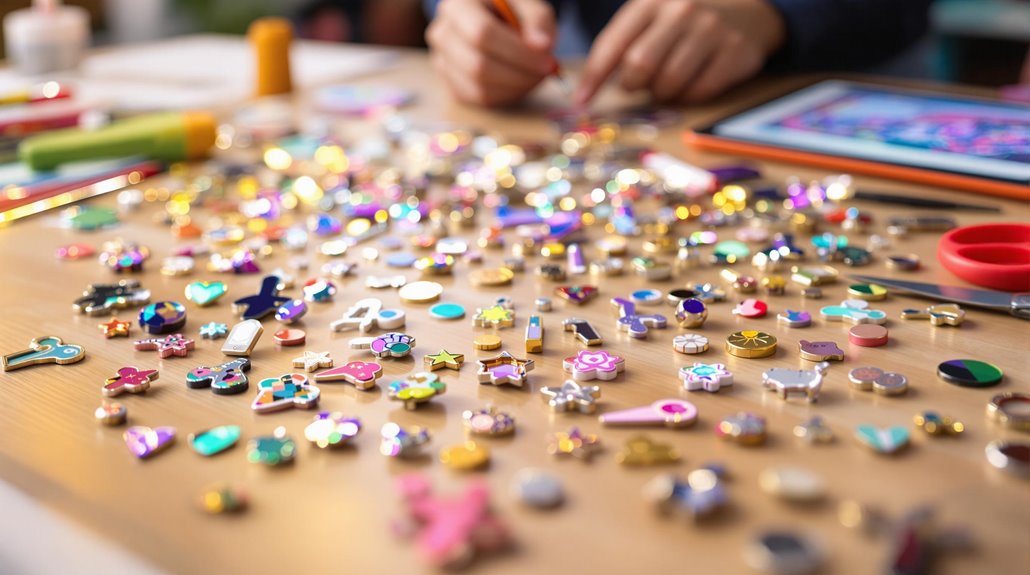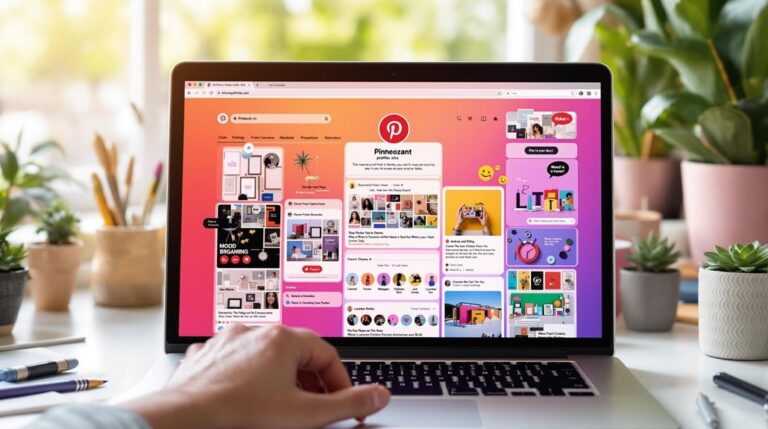To design eye-catching pins that stand out, you should prioritize high-quality images, engaging headlines, and clear calls to action. Utilize tools like Canva for templates and design flexibility, and consider stock photo sources like Unsplash or Pixabay for high-resolution images. Stick to a cohesive color palette, applying the 60-30-10 rule to create visual harmony. Ascertain text is legible by maintaining high contrast and utilizing ample white space. Incorporate actionable language in your headlines, while positioning CTAs effectively. By analyzing audience preferences and using design best practices, you can greatly enhance your pins' visual appeal, and there's more to explore for further improvement.
Designing Keys
- Utilize high-quality images from platforms like Unsplash and Pixabay, ensuring they are relevant to your content and brand.
- Employ Canva or Piktochart for easy design customization and access to templates that enhance visual appeal.
- Implement a clear color palette of 1-3 brand colors, maintaining consistency and visual harmony throughout your pins.
- Use direct, actionable language in your headlines and CTAs to create urgency and encourage user interaction.
- Ensure readability by selecting legible fonts, maintaining high contrast, and incorporating strategic white space in your designs.
Importance of Eye-Catching Pins
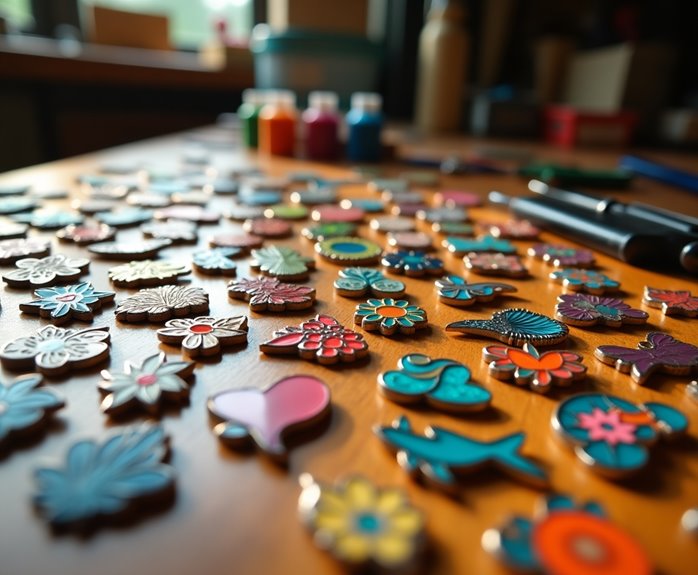
When it comes to standing out on Pinterest, eye-catching pins are essential for enhancing visibility and driving engagement. These visually appealing pins notably increase the likelihood of being saved and shared, which amplifies your brand's reach. By capturing attention in a crowded feed, eye-catching pins become more noticeable, encouraging user behavior that leads to higher engagement, such as clicks and shares.
Incorporating visual storytelling into your pins not only conveys your message effectively but also evokes emotions, making users more inclined to interact with your content. Ascertain that your text is clear and legible, as this allows users to easily read and understand your message, even on smaller screens. Additionally, using high-resolution images in your designs can significantly enhance lasting impressions, making your pins more attractive to users.
Consistent branding in your pin designs, such as using specific colors and fonts, helps build brand recognition and trust, making it easier for users to associate your content with your brand identity.
Moreover, incorporating relevant keywords in your pin descriptions can enhance discoverability, improving your chances of appearing in Pinterest searches. By focusing on these aspects, you can create eye-catching pins that not only capture attention but also drive meaningful engagement and brand awareness.
Selecting High-Quality Images
Selecting high-quality images is vital for creating visually appealing pins that capture attention and drive engagement.
Start by exploring various image sources, such as Freepik, Pixabay, and Unsplash, which offer free high-resolution stock imagery. If you need a broader selection, consider paid options like Shutterstock or Adobe Stock for enhanced libraries.
When choosing images, prioritize relevance to your content to maintain authenticity and brand consistency. Incorporating high-resolution images enhances your visual quality and attracts more viewers.
Image optimization is essential; verify your images are mobile-compatible, given that most Pinterest users scroll on their devices. Aim for a vertical aspect ratio of 2:3, ideally 1000 x 1500 pixels, to guarantee proper display on mobile screens.
If you have original photography, utilize tools like Let's Enhance or Canva for resolution enhancement and overall photo editing.
Avoid using images with faces unless personal branding is important, as these often perform better when they focus on products or concepts.
For unique photography, capture high-quality images with good exposure and sharp focus using digital cameras.
Finally, keep your images in PNG or JPEG formats, verifying they fit within Pinterest's size guidelines for maximum effectiveness.
Crafting Engaging Headlines
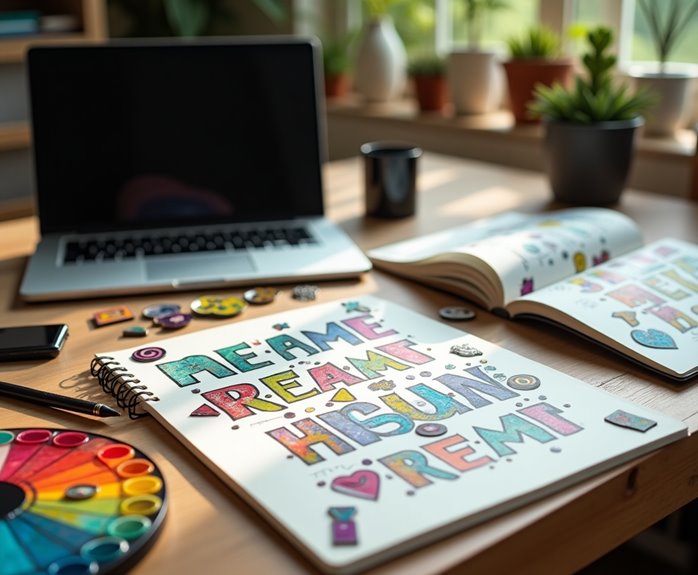
Crafting engaging headlines is essential for capturing attention and enticing clicks on Pinterest. To do this effectively, start with thorough audience analysis. Understand your target audience's interests, pain points, and aspirations, tailoring your headlines to resonate with them. Using direct language, such as "You" or "Your," makes readers feel personally addressed, increasing the likelihood they'll stop scrolling.
Next, consider utilizing proven headline formulas. Create urgency by incorporating phrases like "Don't miss out" or "Limited time offer." Intrigue your audience with mystery, using phrases such as "The Secret to…" or "What They Don't Want You to Know About…." These tactics pique curiosity and encourage clicks. Strong headlines lead to increased sharing and visibility, making them a crucial element in content success.
Incorporate specificity and numbers in your headlines, as they promise clear, structured information. For example, "5 Essential Tips for Your Next DIY Project" provides a tangible offer, making it more relatable.
Finally, guarantee your headlines are actionable or question-based. Phrasing like "How to Transform Your Space on a Budget" or "Are You Using These Effective Marketing Strategies?" invites readers to seek solutions.
Choosing a Color Palette
A well-chosen color palette can make all the difference in your pin's effectiveness and appeal. When selecting colors, consider color psychology; different hues evoke various emotions and responses from your audience. For instance, blues can instill trust, while reds can inspire excitement.
Start by utilizing the color wheel to identify harmonious combinations. Aim for color harmony by using the 60-30-10 rule, where you allocate 60% of a dominant color, 30% for a secondary color, and 10% for an accent. Primary colors serve as the foundation for all other colors, making it essential to incorporate them in your palette for a balanced design.
You could also explore analogous color schemes, using three adjacent colors on the wheel, or complementary schemes, which feature opposing colors for striking contrast. Pay attention to saturation consistency; using colors of similar intensity guarantees visual comfort and enhances readability.
Additionally, think about the background—select solid colors, gradients, or patterns that support your main message without overwhelming it. High contrast between colors is essential for visibility, guiding the viewer's eye effectively.
To find the right palette, leverage online color wheel tools or palette generators, and study successful pin designs to inspire your choices. By applying these principles, you'll create visually appealing pins that stand out in a crowded space.
Ensuring Branding Consistency
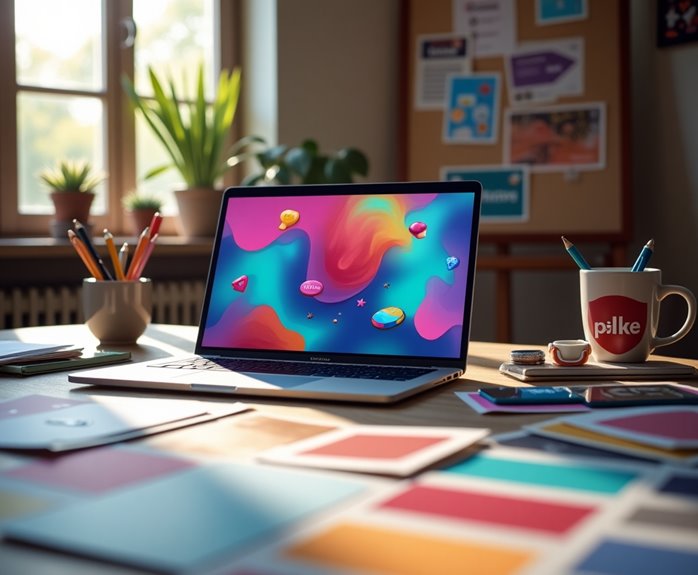
Branding consistency is essential for creating a recognizable presence across all platforms. To achieve this, it's important to establish clear brand guidelines that serve as a foundational framework. This includes defining visual elements, such as your logo and color scheme, in addition to the tone of voice and overall personality of your brand.
These guidelines function as a compass for all future branding endeavors, guaranteeing that your brand identity remains intact. Brand consistency ensures cohesive messaging across all platforms, which is critical for maintaining audience trust and engagement.
Use the same logo and profile picture across all social media channels, since this fosters instant recognition among your audience. Additionally, apply consistent typography and color schemes across your platforms, reinforcing your brand's visual identity.
Incorporate brand elements like patterns, photos, and graphic elements into your Pins for effective design integration.
Messaging is another key area for maintaining consistency. Verify that your core message resonates across all platforms, using a consistent voice that aligns with your brand's values.
Designing for Mobile Users
When designing Pins for mobile users, it's essential to prioritize clarity and engagement. Mobile optimization is important, so make certain your Pins adhere to Pinterest's specified dimensions of 1000 pixels wide by 1500 pixels tall. This guarantees your design remains clear and readable on smaller screens.
Avoid zoomed-out photos, as they can be hard to see. Implement readability strategies, such as using high contrast between text and background, and opt for legible fonts instead of highly decorative ones. Incorporating strategic use of white space can significantly enhance visual appeal and readability.
Utilizing visual hierarchy can guide the viewer's eye effectively. Different font types, sizes, and weights can emphasize important keywords, while adequate spacing between elements prevents clutter. Supporting graphic elements, like arrows, can direct attention efficiently.
Considering that mobile users often have shorter attention spans, enhancing user engagement is essential. Use catchy headlines and relevant keywords to capture attention quickly.
Positioning important elements, like your call-to-action, in the lower third of the pin makes certain they're easily visible. Remember, the overall design should be visually appealing and engaging, maximizing its impact on mobile devices.
Creating Effective Calls to Action
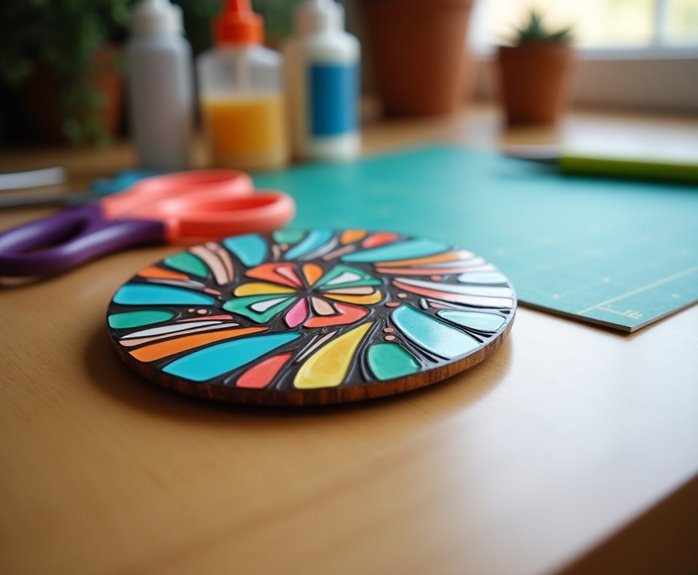
Effective calls to action (CTAs) can considerably boost your engagement on Pinterest, so it's essential to craft them thoughtfully.
To maximize their effectiveness, focus on these key aspects:
- CTA Placement: Position your CTA where users are most likely to see it, ideally in the lower third of your pin image. This area typically garners more attention, ensuring your message isn't missed.
- Action Verbs: Use strong, action-oriented language that clearly conveys what you want the user to do. Phrases like "grab your guide," "download now," or "reserve your spot" create urgency and directness, making it easier for users to understand your request.
- Set Clear Expectations: Clearly communicate what users will gain from clicking your CTA. Whether it's access to a resource, a discount, or an exclusive offer, transparency builds trust and encourages engagement. To further enhance engagement, consider using effective CTAs that resonate with your audience and align with their expectations.
Utilizing Design Tools
In today's visually-driven world, utilizing design tools effectively can set your Pinterest pins apart against the competition. To get started, you should consider various design tool comparisons to find the best fit for your needs.
For instance, Canva offers an intuitive interface, a vast library of templates, and customizable elements that allow you to create unique boards with ease. If you're focusing on infographics, Piktochart is a great option, as it allows for quick resizing and auto-publishing directly to Pinterest.
Template customization is essential for building a cohesive brand image, so select Pinterest-specific templates that guarantee ideal visibility. Customizing these templates not only helps maintain brand consistency but also allows you to adapt designs to fit your unique style. Additionally, establishing a cohesive visual brand identity can significantly enhance recognition and engagement.
Lastly, remember to optimize your designs for mobile, as a significant portion of users access Pinterest via smartphones. By leveraging these tools and techniques, you can create eye-catching pins that effectively capture your audience's attention.
Following Best Practices
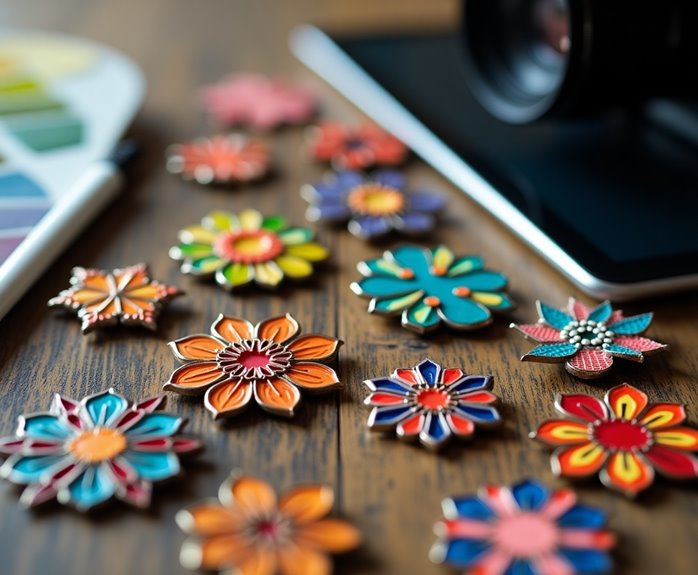
While you might've a great design in mind, following best practices guarantees your Pinterest pins not only capture attention but also resonate with your audience.
Understanding audience preferences is vital, as it helps tailor your content and design effectively. Start by consistently analyzing your pins to see what resonates most with your audience.
Here are three best practices to keep in mind:
- Craft Specific Titles: Create eye-catching, specific titles that clearly communicate the value of your content, such as "How to Launch Your First Online Course in 60 Days."
- Ascertain Readability: Use large, clear fonts, and implement high contrast between text and background. This ascertains readability, especially on mobile devices, where many users browse Pinterest. Additionally, ensure that your text is placed in a way that follows the rule of thirds, which can enhance the visual appeal of your pins.
- Incorporate Calls-to-Action: Encourage engagement by adding clear calls-to-action on your pins, like "Learn More" or "Shop Now." This invites users to interact with your content.
Enhancing Visual Appeal
Creating visually appealing pins is vital to attracting and retaining your audience's attention on Pinterest. To enhance visual appeal, focus on using high-quality, high-resolution images that align with your brand's mood and resonate with your target audience.
Make sure good image composition by selecting images that feature ample white space, allowing for clear text positioning. Avoid busy backgrounds that distract from your message, as they can hinder readability.
Utilizing effective color schemes is fundamental; stick to a palette of 1-3 brand colors to foster familiarity and recognition. High-contrast colors not only enhance legibility but also make your pins visually striking. Incorporating gradient glitters can add a sophisticated touch that complements your chosen color palette.
For text and fonts, opt for easy-to-read styles, limiting how many fonts you use to 1-2 to maintain simplicity. Confirm your headlines are concise, engaging, and large enough for mobile visibility.
Incorporate additional visual elements like stickers or glitter to create distinctive designs, while confirming these elements align with your brand identity.
People are Asking
What Dimensions Should I Use for Pinterest Pins?
For Pinterest image sizes, stick to 1000 x 1500 pixels for standard pins and 1000 x 1000 pixels for square ones. Keep up with pin design trends to guarantee your content grabs attention effectively.
How Often Should I Update My Pin Designs?
Updating your pin designs regularly is essential! Welcome design trends and implement seasonal updates to keep your audience engaged. Aim for freshness every few months to captivate viewers and maintain your brand's relevance in their minds.
Can I Use Animated Elements in My Pins?
Yes, you can use animated elements in your pins! Animated pin advantages include increased engagement. For creative animation tips, try adding stickers and elements that complement your design, making your pins more eye-catching and memorable.
Should I Include Text Overlays on Every Image?
You shouldn't include text overlays on every image. Consider text legibility importance and branding consistency tips. Sometimes, a clean image conveys your message better. Test your audience's preferences to find the right balance.
How Can I Track the Performance of My Pins?
Envision you're a detective, piecing together clues. To track your pins' performance, use analytics tools to monitor performance metrics like impressions and interactions. This'll help you refine your strategy and boost engagement effectively.
Wrapping up
In summary, designing eye-catching pins that stand out is essential for attracting attention and driving engagement. By selecting high-quality images, crafting compelling headlines, and maintaining consistent branding, you can create a powerful visual impact. Utilize design tools to streamline your process, and always follow best practices to enhance your pins' appeal. Remember, the early bird gets the worm; investing time in these strategies will pay off substantially in your online presence and audience interaction.

